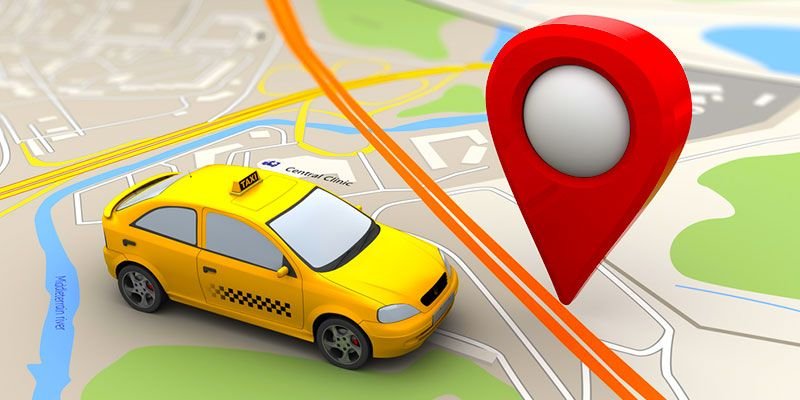What Role does Augmented Reality (AR) Play in Enhancing the User Experience of Taxi Apps?

In the ever-changing world of urban mobility, taxi apps have become essential resources for modern transportation. These apps provide quick and easy ways to get rides in crowded cities. However, with the incorporation of Augmented Reality (AR), the user experience within taxi apps is about to undergo a radical change. AR, which overlays digital content in the real world through smartphones or wearable devices, provides a plethora of options to improve safety, use, and engagement in taxi app development services.
Introduction to AR in Taxi Apps
Taxi apps have fundamentally altered how people navigate and experience cities. By incorporating AR technology, these platforms can elevate their functionality beyond basic ride-hailing to deliver immersive, interactive, and personalized experiences. AR’s ability to merge virtual elements with the physical environment enables innovative features that streamline navigation, bolster safety, and enrich overall user satisfaction.
1. Enhanced Navigation and Wayfinding
AR holds immense potential in simplifying the pickup process for users. Imagine opening a taxi app and seeing virtual guides overlaid on the streets, leading you directly to your pickup point. These intuitive visual cues, displayed in real-time through your smartphone’s camera, eliminate ambiguity and reduce the likelihood of missed connections. For travelers in unfamiliar cities or during peak traffic hours, AR-enabled navigation can be a game-changer, ensuring a seamless and stress-free pickup experience.
Moreover, AR can enhance wayfinding by displaying additional contextual information, such as nearby landmarks, transit options, or points of interest. By integrating such features, taxi apps become more than just transportation tools—they become indispensable urban guides, empowering users to explore cities with confidence.
2. Improved Safety and Confidence
Safety is a paramount concern in transportation services, especially when interacting with strangers and navigating unfamiliar environments. AR can play a pivotal role in enhancing user safety and confidence throughout their journey. For instance, during the pickup process, AR overlays can highlight designated pickup zones, ensuring users locate their rides efficiently and securely. Additionally, AR can display real-time driver information, including photographs and ratings, directly within the user’s field of view, fostering trust and transparency.
Once inside the vehicle, AR can continue to promote safety by providing visual alerts for potential hazards, such as construction zones or pedestrian crossings. These augmented safety features not only mitigate risks but also empower users with heightened situational awareness, particularly in dynamic urban settings.
3. Interactive Ride Experience
AR transforms the ride itself into a dynamic and interactive experience. Within the taxi app interface, AR can display real-time journey information, such as estimated time of arrival, alternative route suggestions, or upcoming points of interest. This contextual layer of information enriches the ride experience, keeping passengers engaged and informed throughout the journey.
Furthermore, AR can facilitate language translation services, allowing users to view translated street signs or menus directly through their devices. This integration of AR transcends mere transportation, positioning taxi apps as comprehensive travel companions tailored to the needs of global citizens.
4. Brand Engagement and Differentiation
From a business perspective, integrating AR into taxi apps offers a unique opportunity for brand differentiation and customer engagement. By incorporating captivating AR interactions, taxi service providers can distinguish their offerings in a competitive market. Engaging AR features not only leave a lasting impression on users but also reinforce brand identity and customer loyalty.
Moreover, AR-driven promotions and partnerships with local businesses can create value-added experiences within the app, further enhancing its appeal and utility. As AR technology continues to evolve, innovative applications will redefine the boundaries of user engagement within taxi services.
Challenges and Future Outlook
Despite its transformative potential, integrating AR into taxi apps presents technical, logistical, and user acceptance challenges. Ensuring seamless performance across diverse devices and environments requires robust development and testing. Moreover, widespread adoption of AR features depends on user familiarity and evolving technological capabilities.
Looking ahead, the future of AR in taxi apps is promising. Advancements in AR hardware, such as augmented reality glasses or improved smartphone cameras, will further enhance the user experience. Additionally, the convergence of AR with other emerging technologies like artificial intelligence (AI) and geolocation services will unlock new possibilities for personalized and context-aware features.
Conclusion
In conclusion, augmented reality represents a paradigm shift in the user experience of taxi apps, offering a well-balanced combination of utility, safety, and engagement. From streamlined navigation to improved safety features and engaging riding experiences, AR improves every aspect of urban mobility. As taxi apps harness the full potential of AR, they will not only satisfy but also exceed customer expectations, creating a new benchmark for modern transportation services. This merging of augmented reality and transportation heralds a future where everyday journeys become more seamless, enjoyable, and immersive, fundamentally changing how we navigate and experience our cities.



